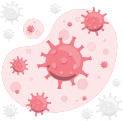Tennis elbow is a common injury seen in tennis or activities involving repetitive elbow motions. This injury results in inflammation, damage to the tendon fibers, and pain, which can range from mild to severe.
Tennis elbow can lead to weakness in the arm and hand, making it difficult to grip objects, shake hands, or even hold a glass. Learn more about the causes of tennis elbow and how to identify its symptoms.
What is Tennis Elbow?
Medically, tennis elbow is referred to as lateral epicondylitis, a condition where small tears occur in the tendons of the elbow due to overuse. This injury happens when the tendons connecting the lower arm muscles to the elbow experience repeated stress or stretching.
Although commonly associated with tennis, anyone can develop this condition, especially those who engage in repetitive elbow movements, such as painters or construction workers. Tennis elbow can cause pain that radiates down the arm to the wrist.
Causes of Tennis Elbow
The primary cause of tennis elbow is repetitive activities that put strain on the forearm muscles, especially the tendon attached to the outer part of the elbow (lateral epicondyle). The risk of developing this condition increases with age and obesity, particularly in individuals over 40.
Movements that involve repetitive lifting, twisting, or gripping can strain the muscles and tendons in the forearm, leading to inflammation or minor tendon damage around the elbow.
Throughout daily activities, the muscles of the forearm can experience repetitive stress that causes pain in the elbow area. Here are some activities that may trigger tennis elbow:
-
Holding a racket with improper technique
-
Using tools like pliers or wrenches
-
Painting
-
Turning screws
-
Cutting hard foods, such as meat, while cooking
-
Typing for prolonged periods
-
Lifting heavy loads exceeding 22 kg daily
Symptoms of Tennis Elbow
Tennis elbow is typically identified by several symptoms, including:
-
Pain on the outside of the elbow
-
Pain radiating from the elbow to the lower arm and wrist, especially during certain movements
-
Stiffness in the elbow, making it difficult to move, particularly after sleeping or resting the arm for a while
-
Swelling around the elbow area
-
Reduced grip strength
-
Pain during activities that use the arm, like opening a door or lifting heavy objects with a straight arm
-
Recurring pain, especially when you are engaging in strenuous activities
In mild cases, tennis elbow often improves with cold compresses, rest, or pain relievers. However, if the pain persists despite home treatment, you should see a doctor right away.
If the pain follows a significant injury, such as a fall or direct impact to the elbow, additional evaluation may be needed to rule out fractures or other damage.
If you have more questions about tennis elbow, don't hesitate to consult a doctor through the Ai Care app, available for download on the App Store or Play Store.
Looking for more information about other diseases? Click here!
- dr Nadia Opmalina
Cleveland Clinic (2024). Tennis Elbow (Lateral Epicondylitis). Available from: https://my.clevelandclinic.org/health/diseases/7049-tennis-elbow-lateral-epicondylitis
Mayo Clinic (2023). Tennis elbow. Available from: https://www.mayoclinic.org/diseases-conditions/tennis-elbow/symptoms-causes/syc-20351987
Mayo Clinic (2023). Elbow pain. Available from: https://www.mayoclinic.org/symptoms/elbow-pain/basics/when-to-see-doctor/sym-20050874












